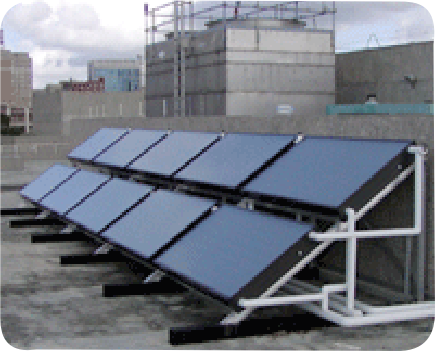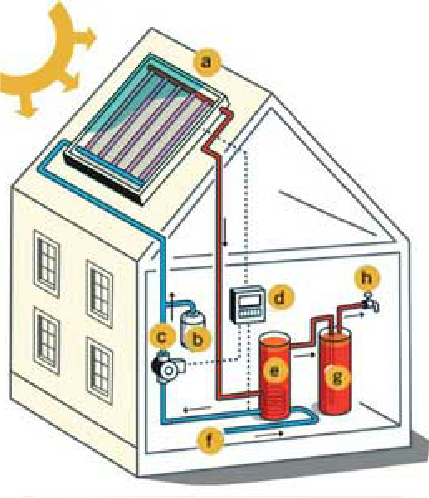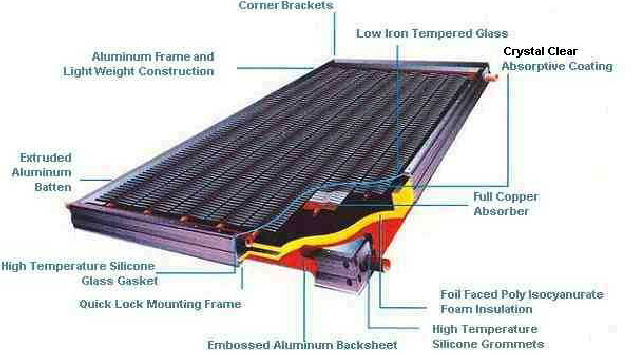



Harnessing energy from the sun to heat water is nothing new. Solar water heaters have been commercially available since the 1800s. What's new is how solar water heaters look these days. Most modern solar water heaters mount flush with a home's roof and resemble skylights. Solar water heaters are an environmentally sound way to reduce energy bills.
Solar energy can meet part or all of a home's domestic hot water needs. Geographic location, system design, collector orientation, and collector size will determine how much energy can be provided for domestic hot water heating.
Solar water heaters come in a variety of configurations. Each differs in design, cost, performance, and level of complexity. Most systems have back-

ABOVE: Example of a surfaced mounted solar hot water system.

ABOVE: Diagram showing a typical installation.
There are two main types of systems: passive and forced circulation. Within each type, there are several configurations. A passive water heater consists of a water tank integrated into or located above a solar collector. In an integrated collector storage (ICS) system, also called batch water heater, the water is heated and stored inside the collector. These systems are suitable only for warm climates where there is no risk of freezing. In a passive system where the storage is separate from the collector, as water in the collector warms, water flows by natural convection through the collector to the storage tank. A forced circulation system requires a pump to move water from the storage tank to the collector. Most solar water heaters in the United States are the forced circulation type.
There are several types of solar collectors. Most consist of a flat copper plate, painted black, that has water tubes attached to the absorber plate. As solar energy falls on the copper plate and is absorbed, the energy is transferred to water flowing in the tubes. The absorber plate is mounted in a casing that has a clear covering and insulation to protect the absorber plate from heat loss. Other collectors include an integrated collector and storage system and the evacuated tube collector. Integral collector and storage systems combine the function of hot water storage and solar energy collection into one unit. Evacuated tube collectors produce higher temperature water and are more complex than flat plate collectors. Evacuated tube collectors consist of a series of tubes that contain a heat pipe to absorb solar energy and transfer it to a liquid medium. The tubes are evacuated (vacuum) so that there is very little heat loss from the tube. Most solar collectors are roof-

ABOVE: Solar Collector Panel Cross Section.
